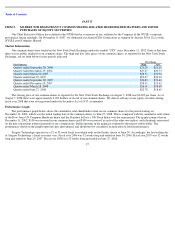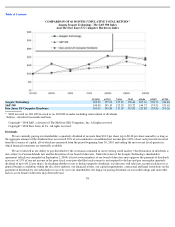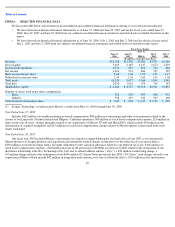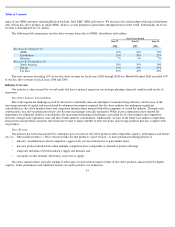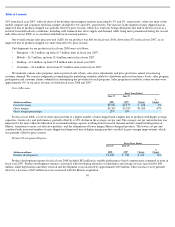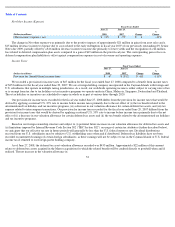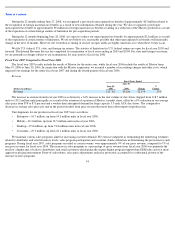Seagate 2007 Annual Report Download - page 46
Download and view the complete annual report
Please find page 46 of the 2007 Seagate annual report below. You can navigate through the pages in the report by either clicking on the pages listed below, or by using the keyword search tool below to find specific information within the annual report.
Table of Contents
startup or boot disc drives. In addition, enterprises are considering the use of SSDs in applications where rapid processing is required
for high volume transaction data. The timing of the adoption of SSDs in these applications is currently unknown as enterprises weigh
the cost benefits of mission critical enterprise disc drives relative to the perceived performance benefits of SSDs.
Business critical enterprise storage is an emerging and growing application in enterprise storage whereby enterprises are using higher
capacity disc drives to store less frequently accessed, less time-critical, but capacity-
intensive data. Because of recent decreases in cost
per gigabyte, business critical electronic data which historically has been stored on tape or other backup and archival technologies are
now being stored on these high capacity disc drives. In the long-term, however, we believe that this trend towards business critical
systems that utilize high capacity, enterprise class serial advanced technology architecture (SATA) and serial attached small computer
system interface (SAS) will, in addition to expanding the overall enterprise market, likely shift some demand from disc drives used in
traditional mission critical enterprise storage.
•
Disc Drives for Branded Solutions
. We believe that the proliferation of media-rich digital content has increased consumer demand
for storage to augment their current desktop or notebook disc drive capacities. Consumers are also using external branded storage
solutions to backup and secure data in case of disaster or system failure.
•
Disc Drives for Desktop Computing.
We believe growth in disc drives for desktop computing has moderated, in part due to the
growth in demand for notebook computers, particularly in developed countries. We believe that current growth in demand for disc
drives in desktop computing is focused on developing markets where price remains a primary consideration. Demand for inexpensive,
high capacity external storage has also driven growth of 3.5
-
inch desktop disc drives.
We believe that for some of the fastest growing applications described above, the demand is focused on higher capacity disc drive
products.
Product Life Cycles and Changing Technology
•
Disc Drives for Consumer Electronics.
Disc drives in the consumer electronics (CE) markets are primarily used in high-capacity
solutions, such as DVRs, that require more storage capability than can be provided in a cost-effective manner through alternative
technologies such as flash memory, which is used in lower capacity CE applications. We believe the demand for disc drives in CE will
become more pronounced with the increased amount of high definition content that requires larger amounts of storage capacity.
Although solid state or flash memory has largely replaced disc drives in handheld applications, we believe that the demand for disc
drives to store, hold or back up related media content from such handheld devices, continues to grow.
Our industry has been characterized by significant advances in technology, which have contributed to rapid product life cycles. As a result,
success in our industry has been dependent to a large extent on the ability to be the first-to-market with new products, allowing those disc drive
manufacturers who introduce new products first to sell those products at a premium until comparable products are introduced. Also, because our
industry is characterized by continuous price erosion, the existence of rapid product life cycles has necessitated the need to quickly achieve
product cost effectiveness. Changing technology also necessitates the need for on-
going investments in research and development, which may be
difficult to recover due to rapid product life cycles. Further, there is a continued need to successfully execute product transitions and new product
introductions, as factors such as quality, reliability and manufacturing yields become of increasing competitive importance.
Seasonality
The disc drive industry traditionally experiences seasonal variability in demand with higher levels of demand in the second half of the
calendar year. This seasonality is driven by consumer spending in the back-to-school season from late summer to fall and the traditional holiday
shopping season from fall to winter. In
45




